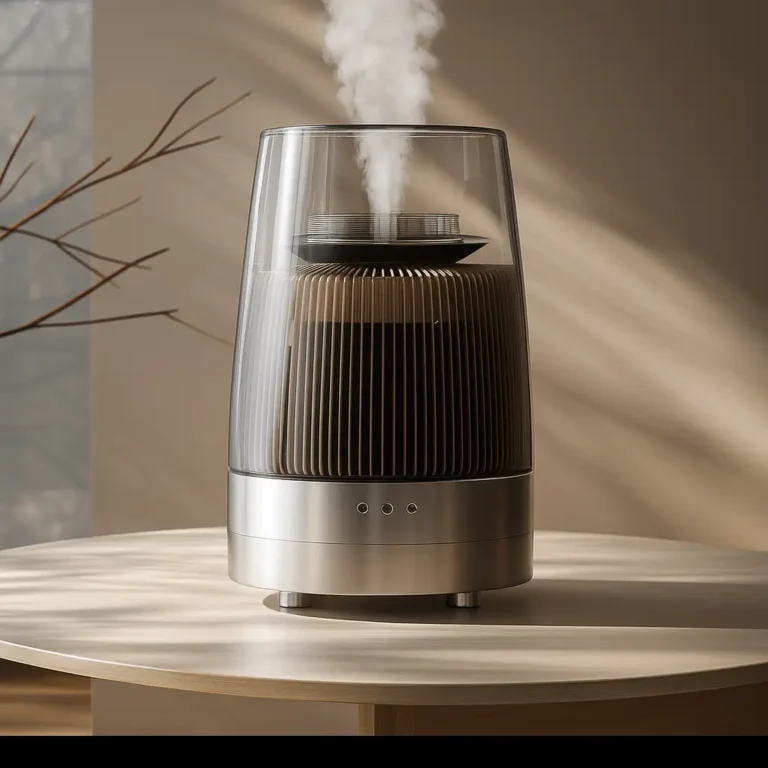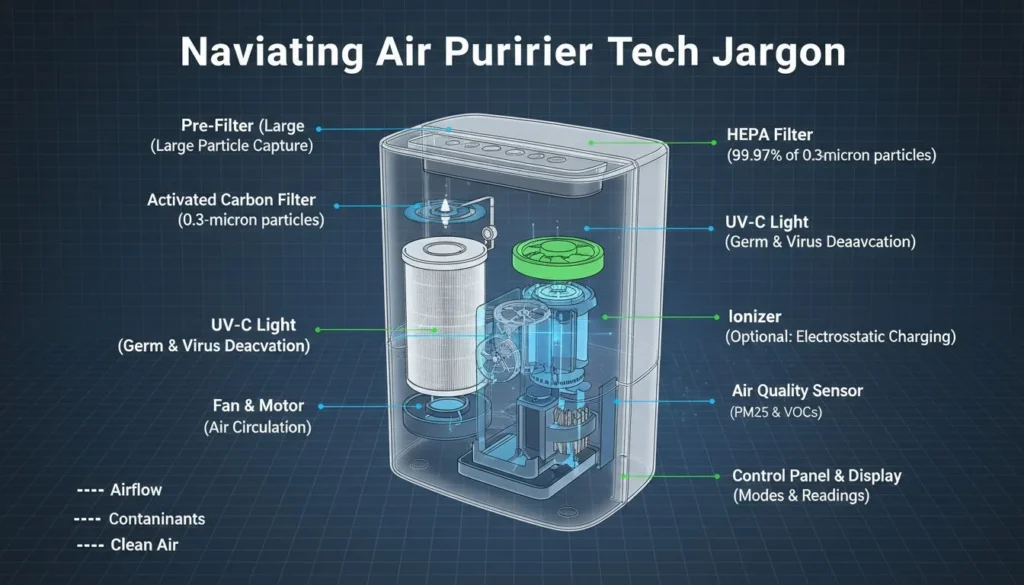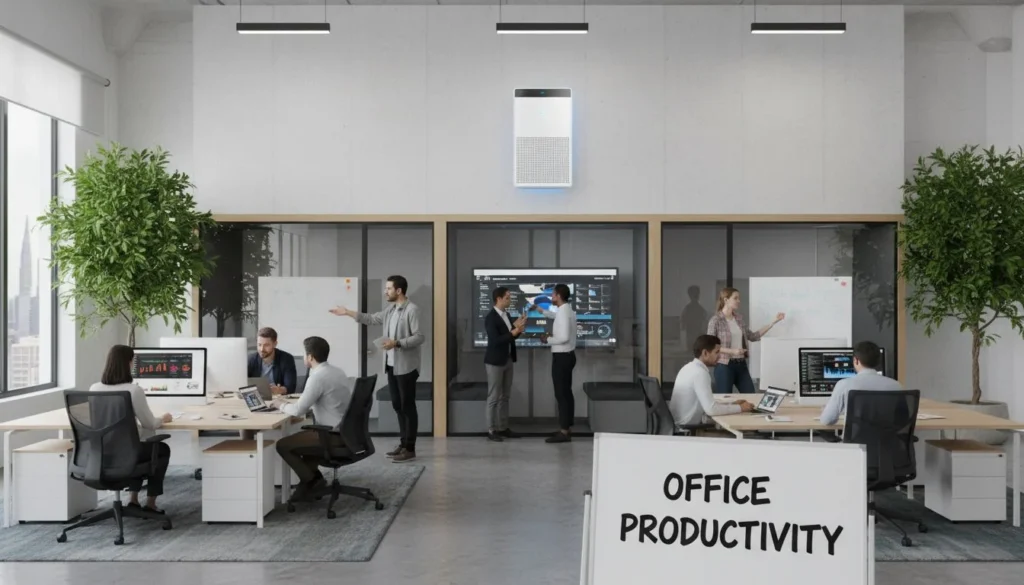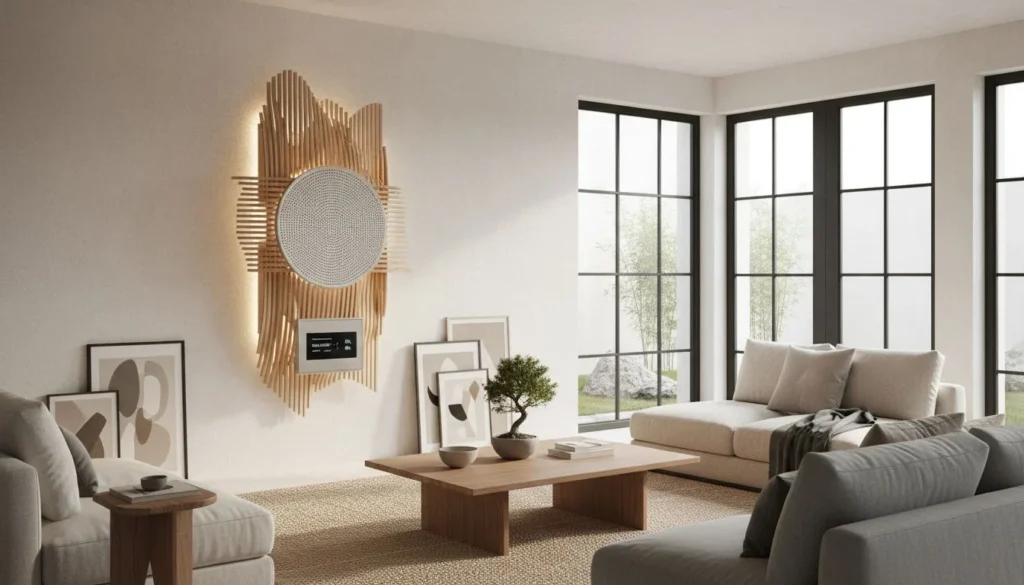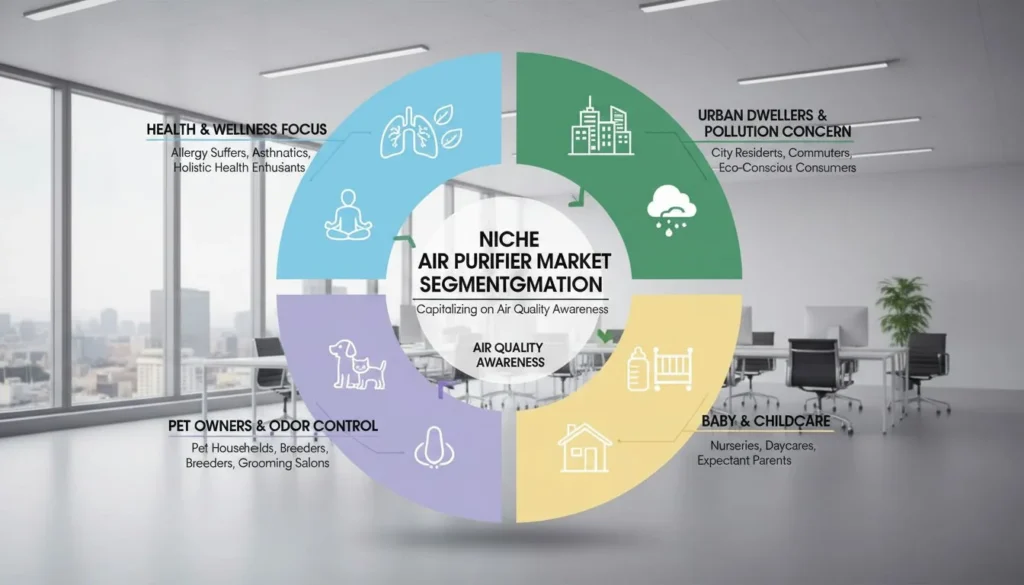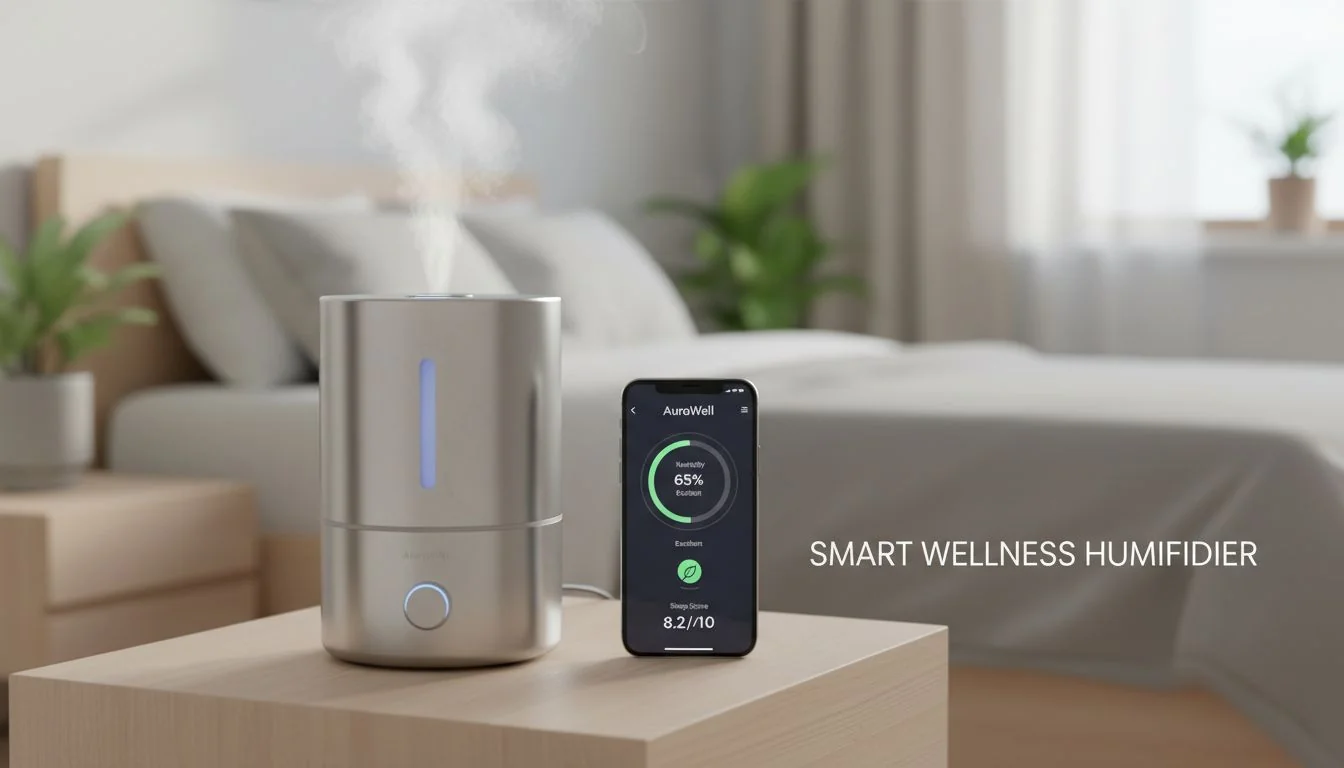
Your client wants a "smart" humidifier, but just adding a Wi-Fi chip is a dead-end strategy. The market is flooded, and you're left with no real competitive advantage.
The future of home wellness devices is not just about IoT connectivity. It's the fusion of smart technology with fundamentally hygienic materials1, like stainless steel. This redefines "smart" to mean "healthy," creating a truly premium and defensible product that plastic-based competitors cannot easily replicate.

You've seen the "smart" label on everything from toasters to trash cans. As product designers, we're constantly asked to integrate this tech. But I've learned from my years in manufacturing that a Wi-Fi chip is a commodity. It's cheap and easy to add. It is not a long-term strategy for building a premium brand2. The real question we need to ask is, what problem are we actually solving for the end-user? Let's break down why the current approach to "smart" humidifiers is flawed and explore where the real opportunity lies for designers like us.
The global smart home market is projected to reach $138.9 billion by 2026.真
Multiple market research firms, like MarketsandMarkets, project significant growth, indicating a strong consumer appetite for connected devices.
Adding a Wi-Fi module to a home appliance costs manufacturers less than $5.真
The cost of IoT components like the ESP8266 or similar modules has dropped dramatically, making connectivity a commodity feature rather than a premium one.
Is "Smart Home" Evolving into "Smart Wellness"?
You're designing "smart" products, but the market is saturated with me-too gadgets. Just adding an app isn't enough anymore. Consumers want products that genuinely improve their health, not just offer convenience.
Yes, the "smart home" concept is maturing into "smart wellness3." This evolution demands that products do more than just connect to Wi-Fi. They must actively contribute to a healthier living environment. This forces us, as designers, to reconsider materials, hygiene, and the total user experience.
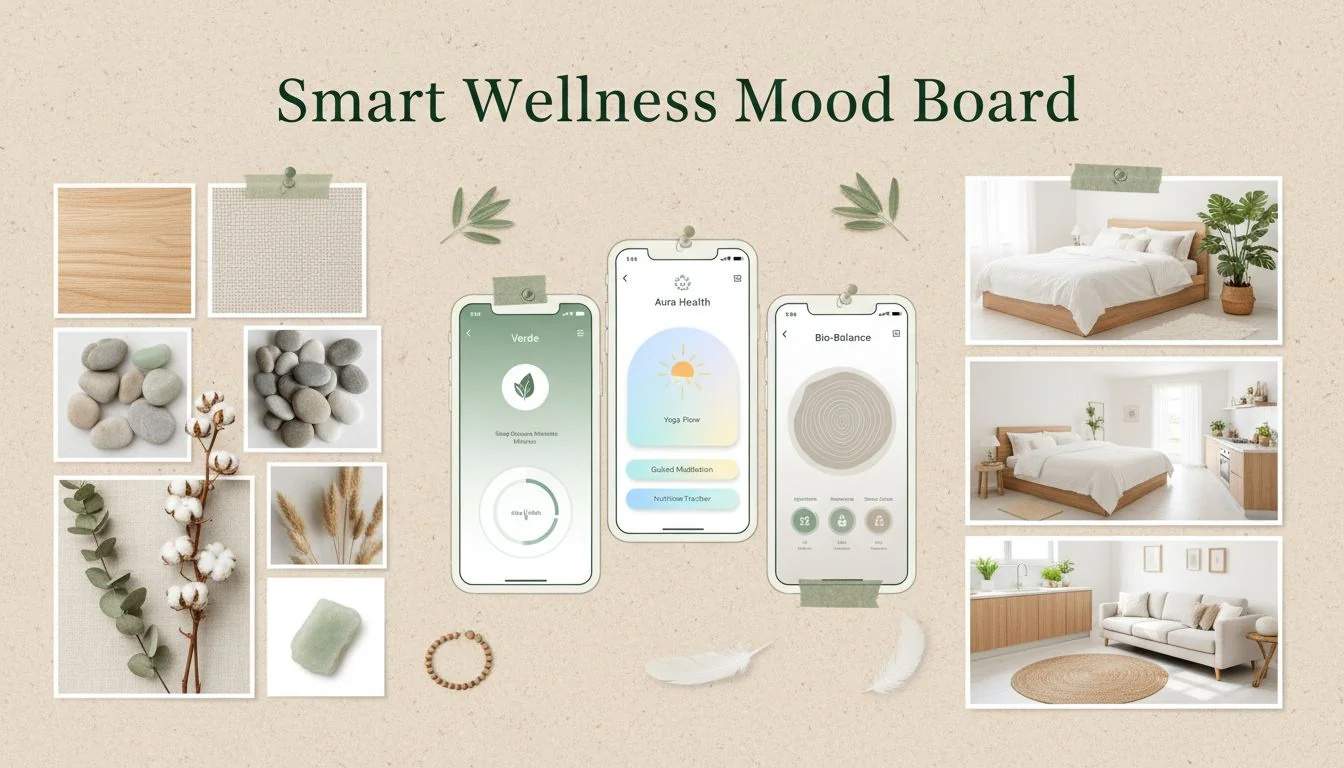
I remember the early days of "smart home" tech. I'd visit factories, and their big innovation was taking a ten-year-old product design and just adding a connectivity module. It was all about remote control. Can I turn it on from my phone? That was "smart." But consumers are smarter now. They expect more. The new benchmark isn't convenience; it's a genuine contribution to their well-being. This shift is the single biggest opportunity for product designers today. It's a move away from shallow features and toward deep, meaningful innovation.
From Convenience to Contribution
The market is making a clear shift. We are moving from a world of simple remote controls to one of proactive health management. As designers, our focus must shift too.
| アスペクト | Smart Home 1.0 (Convenience) | Smart Wellness (Contribution) |
|---|---|---|
| Core Value | Remote control, automation | Proactive health improvement |
| 主な特徴 | App connectivity | Hygienic materials, air quality sensors |
| Material Focus | Cost-effective plastics | Non-porous, easy-to-clean materials |
| User Goal | "Make my life easier" | "Make my life healthier" |
A 2022 survey found that 78% of consumers are more likely to buy a product if it is marketed as 'clean' or 'hygienic'.真
Consumer trends consistently show a growing preference for products that emphasize health, safety, and cleanliness, especially in the post-pandemic era.
All smart devices are designed to improve the user's health.偽
Many smart devices are designed purely for convenience, entertainment, or security, and do not have a direct health-related function or benefit.
What Does "Smart Humidifier" Really Mean for Designers Today?
Your client wants a "smart humidifier," and your mind immediately goes to app control, scheduling, and voice commands. But this is just the baseline. Every factory can offer this. It's a commodity.
Today, a "smart humidifier" typically means a device with Wi-Fi or Bluetooth, allowing app-based control. Key features include remote on/off, scheduling, humidity level automation, and voice assistant integration. These features are the current industry standard, not a point of real design differentiation.
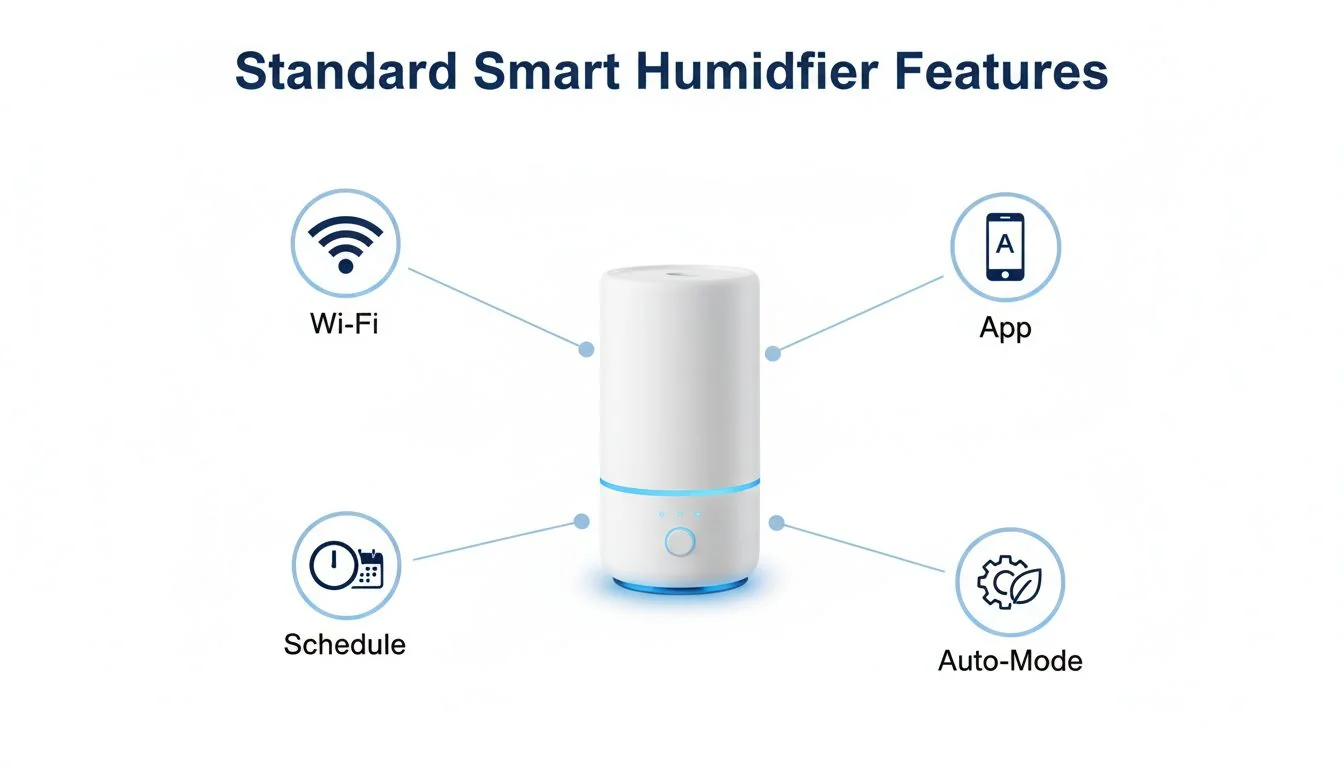
I've sourced these "smart" solutions for clients. The electronic components are off-the-shelf. The app is often a white-label solution that a factory provides. From a design and engineering perspective, the challenge isn't in making it "smart" in this way. The real work is in the integration. But this work doesn't create a product that's fundamentally better or more defensible. It just checks a box on a marketing feature list. To create something that lasts, we have to look past this baseline and ask what's missing.
The Standard "Smart" Feature Set
Understanding the current baseline is crucial before you can innovate beyond it. Here are the common features and what they mean for your design process.
| 特徴 | Design & Engineering Implication |
|---|---|
| アプリコントロール | Requires UI/UX collaboration, API integration, and server maintenance. |
| Scheduling | A software-side feature, minimal impact on physical product design. |
| Auto-Mode | Requires integrating a humidity sensor (hygrostat4) into the hardware. |
| Voice Control | Integration with third-party platforms like Alexa or Google Assistant. |
The global market for home humidifiers is saturated with thousands of similar plastic models.真
A quick search on platforms like Amazon or Alibaba reveals a vast number of brands selling visually and functionally similar ultrasonic humidifiers, indicating a highly commoditized market.
Integrating a hygrostat adds significant cost to a humidifier's bill of materials.偽
Basic humidity sensors are inexpensive electronic components, often costing less than a dollar, making them a common feature in mid-range and even budget humidifiers.
What's the Fatal Flaw in Most "Smart" Humidifiers?
You've designed a beautiful, app-controlled humidifier. It looks perfect on the shelf. But inside its plastic tank, a slimy biofilm5 is growing. The "smart" tech does nothing to stop the device from becoming a germ-spreader.
The fatal flaw of 99% of smart humidifiers is the material. Most use plastic tanks that are porous, scratch easily, and are impossible to clean properly. This turns a device meant for wellness into a potential health hazard, making its "smart" features ironically dumb.

This is the conversation I have with clients all the time. I once visited a factory that was producing thousands of "smart" humidifiers for a big brand. The outer shells were sleek and modern. But I picked up a water tank and ran my finger inside. It was the same old ABS plastic with dozens of corners and crevices. I asked the factory owner, "How does the app clean this?" He just smiled and said, "The app tells the user to clean it." That's the problem. We're adding a layer of digital intelligence on top of a fundamentally unintelligent physical design.
When "Smart" Tech Meets "Dumb" Materials
A smart device is only as good as its weakest link. In the case of humidifiers, that link is almost always the material that holds the water. Plastic, for all its versatility in molding, has a major downside in wet environments. It's a perfect breeding ground for the very things the user is trying to avoid. The "smart" features can't fix a problem that is literally built into the product's DNA.
- Biofilm: A slimy layer of bacteria that adheres to surfaces, especially porous plastics.
- Micro-scratches: Cleaning plastic with brushes creates tiny scratches where more bacteria can hide.
- Complex Geometries: Injection-molded plastic tanks often have tight corners and internal structures that are impossible to reach and clean.
Biofilm can form on plastic surfaces in a wet environment in as little as 24 hours.真
Studies in microbiology show that bacteria can adhere to surfaces and begin forming a protective biofilm matrix within hours of exposure to water and nutrients.
Smart humidifiers use internal sensors to detect mold and biofilm growth.偽
Currently, no commercially available consumer humidifiers have sensors capable of detecting microbial growth. They can only measure humidity and temperature.
How Can We Fuse Smart Tech with Hygienic Materials?
You want to design a truly premium product that your client can build a brand around. Relying on commodity electronics is a race to the bottom. Your design will be copied in months.
The future is fusing smart technology with superior, hygienic materials. By choosing a material like stainless steel6 for all water-contacting parts, you create a product that is both intelligent and inherently healthy. This is the foundation for a defensible, premium product.
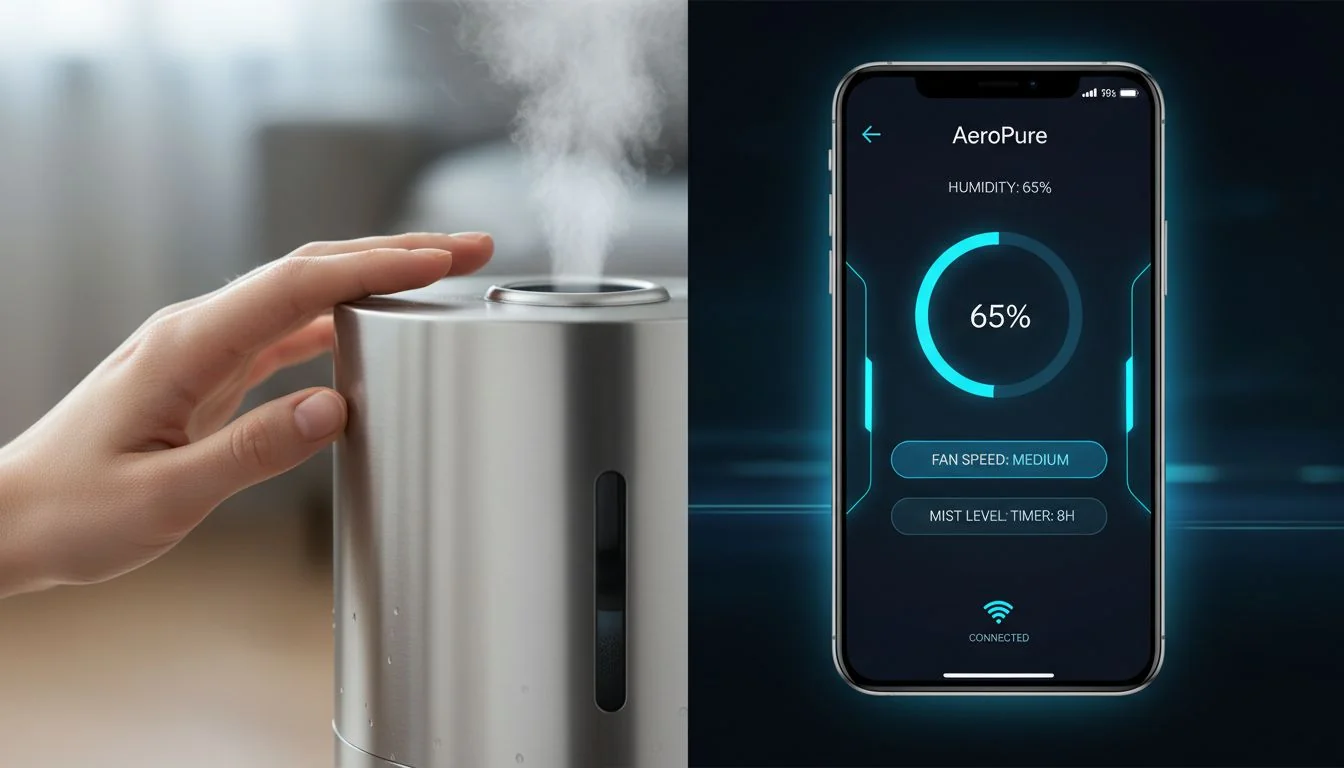
As someone who has built a career on mold making and manufacturing, I can tell you that the material choice is the most important decision you make. Any factory can add a Wi-Fi chip. But not every factory can tool and manufacture a deep-drawn, seamless stainless steel tank. That requires massive investment, specialized machinery, and deep expertise. This is where you build a real competitive advantage, or what we call a "moat." The smart features then become the perfect complement, justifying the premium nature of the superior physical product.
Stainless Steel: The Unsung Hero of Wellness Tech
For decades, stainless steel has been the standard in medical and food-grade applications for one reason: it's hygienic. It's time we bring that same standard to home wellness.
| Metric | Injection-Molded Plastic | Stainless Steel |
|---|---|---|
| Hygiene | Porous, scratches easily | Non-porous, resists bacteria |
| 耐久性 | Can crack, becomes brittle | Extremely durable, long-lasting |
| Perceived Value | Low, feels cheap | High, feels premium and solid |
| Mfg. Complexity | Low, fast cycle times | High, requires specialized tooling |
Stainless steel is non-porous, which helps prevent bacteria and mold from growing on its surface.真
The surface of stainless steel is smooth and lacks the microscopic pores found in plastics, making it difficult for microorganisms to attach and colonize.
The tooling cost for a deep-drawn stainless steel part is often 5-10 times higher than for a comparable plastic injection mold.真
Steel stamping and drawing dies are made from hardened tool steel and require complex, multi-stage processes, making them significantly more expensive and time-consuming to produce than aluminum or pre-hardened steel injection molds.
How Can D2C Brands Win with "Total Innovation"?
Your D2C client needs a hero product that justifies a premium price and stands out in a sea of sameness. Competing on features alone is a losing battle. Customers are tired of another "smart" gadget.
D2C brands win by offering "total innovation7." This means creating a product that is superior in both its physical construction and its digital intelligence. It's about combining a defensible material advantage, like stainless steel, with a seamless smart experience. This creates a powerful brand story.

The strategy here is to change the conversation. Don't sell a "smart humidifier." Sell a "healthy air solution." The stainless steel body is the proof. It's the physical manifestation of the "healthy" promise. The smart features make the experience modern and effortless. This is how you justify a $200+ price point when the market is flooded with $50 plastic models. You're not just selling a better version of the same thing; you're selling a completely different, superior category of product.
Building a Defensible Brand Moat
This is where you provide immense value to your client. You're not just designing a product; you're designing a business strategy.
- The Wellness Ecosystem: Think bigger. If your manufacturing partner (like Hisoair) also makes air purifiers, you can design a unified wellness ecosystem. A single, elegant app that controls the Hisoair-sourced humidifier and air purifier. This increases customer lifetime value and creates brand lock-in.
- Justifying the Premium: The two innovations support each other. The steel justifies the price with its quality and health benefits. The smart features add a layer of modern convenience that premium customers expect. Together, they make the high price feel like a great value.
Brands with a unique and defensible product 'moat' consistently achieve higher profit margins than competitors in commoditized markets.真
Business strategy principles, from Warren Buffett to modern marketing theory, confirm that a sustainable competitive advantage allows a company to have greater pricing power.
A unified app ecosystem for multiple devices can increase customer retention by over 25%.真
Tech industry data shows that customers who invest in a brand's ecosystem (e.g., Apple, Google) are significantly less likely to switch to a competitor due to the high switching costs and convenience of integration.
Why Should We Stop Selling "Connected" and Start Selling "Healthy"?
You're stuck in a design loop, adding more features to the same old plastic boxes. This incremental approach is a race to the bottom. The market is crowded, and margins are shrinking.
We should stop selling "connected" because it's a commoditized feature that no longer excites customers. We must start selling "healthy" because it addresses a core human need and opens the door for true innovation in materials, manufacturing, and design.
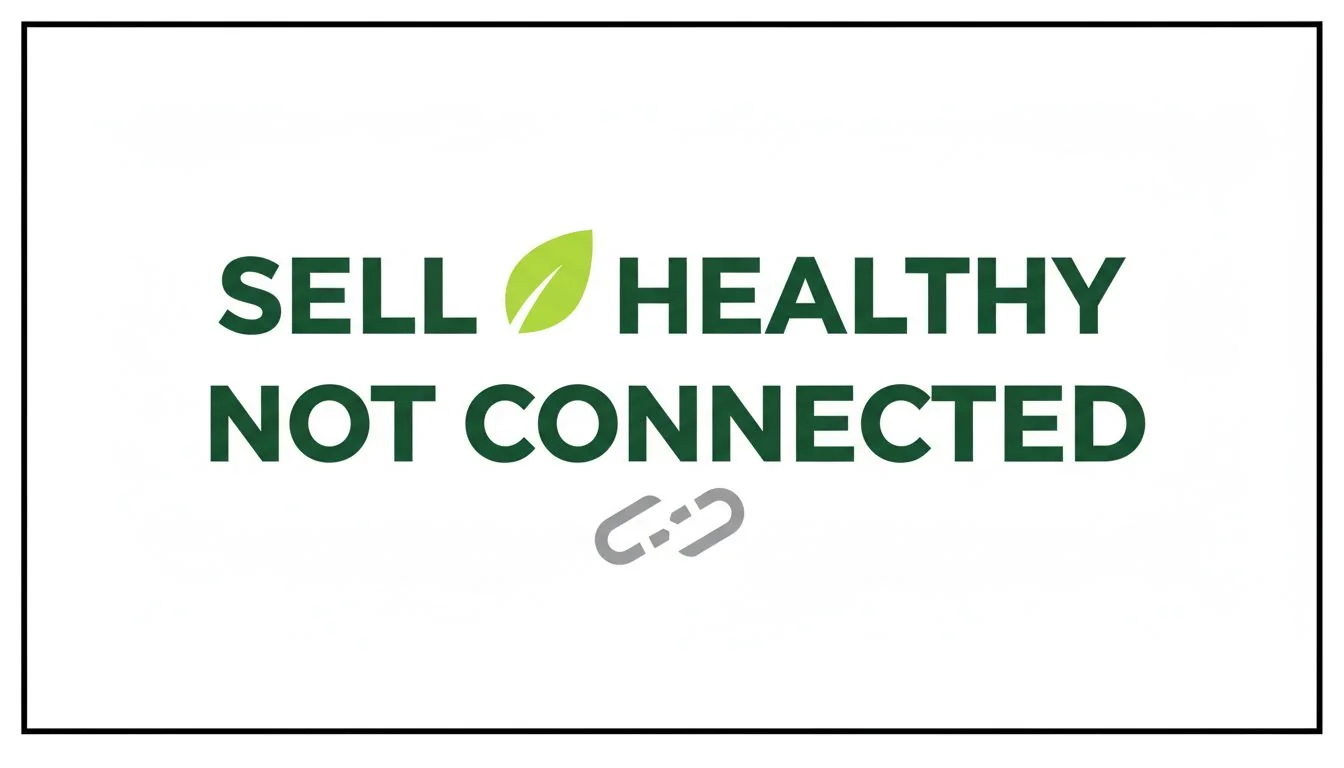
For years, my work has been helping clients create molds for plastic parts. I've seen countless trends. This shift from "connected" to "healthy" is not just a trend. It is a fundamental redefinition of what "quality" means in a consumer product. As a designer, your mandate is changing. It's no longer enough to make a product look good or connect to an app. Your job is to design a product that is truly good for the person using it. And that process, I've learned, always starts with the materials you choose.
The Designer's New Mandate
Your role is to guide your clients toward this new, more meaningful definition of "smart." It's about having the foresight to see beyond the next feature request and to focus on building lasting value.
- Intercept the Query: When a client says "smart," you say "healthy and smart."
- Educate on Materials: Explain the fatal flaw of plastics and the defensible benefits of steel.
- Design Holistically: Create an experience where the physical product and digital interface work together to deliver a single, powerful message: "This product is designed for your well-being."
The term 'smart device' is experiencing semantic satiation, where overuse has diminished its marketing impact.真
Marketing analysis and consumer sentiment studies show that generic terms like 'smart' are becoming less effective as differentiators, forcing brands to use more specific and benefit-oriented language.
Within 5 years, all premium humidifiers will be made with stainless steel tanks.偽
While the trend toward more hygienic materials is real, this is a bold prediction. Material and manufacturing shifts take time, and other materials like glass or treated polymers could also emerge as alternatives. This claim is a strategic exaggeration to emphasize the importance of the trend.
結論
The future of home wellness isn't just about apps. It's about fusing smart tech with hygienic materials. Redefine 'smart' to mean 'healthy' and build products that are truly innovative.
References
-
Exploring hygienic materials can reveal how they enhance product safety and user health. ↩
-
Understanding strategies for premium branding can help differentiate products in a crowded marketplace. ↩
-
Investigating smart wellness trends can provide insights into evolving consumer demands for health-focused products. ↩
-
Learning about hygrostats can improve understanding of humidity control in product design. ↩
-
Learning about biofilm can highlight the importance of material choice in product design for health. ↩
-
Understanding the advantages of stainless steel can help in designing safer, more durable products. ↩
-
Discovering total innovation can inspire new approaches to creating unique and valuable products. ↩



